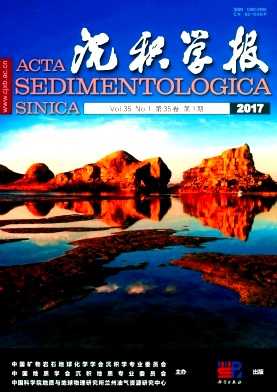The Relationship between Volcanism and Reef Sedimentary Evolution from Late Permian to the Beginning of Early Triassic in Ziyun Area, Guizhou Province
doi: 10.14027/j.cnki.cjxb.2017.01.003
- Received Date: 2016-03-14
- Rev Recd Date: 2016-05-19
- Publish Date: 2017-02-10
-
Key words:
- Changhsingian /
- reef /
- magnetic susceptibility /
- sedimentary evolution /
- volcanism
Abstract: Late Permian Changhsingian is an important period of reef buildup as well as a period of frequent volcanic activities in South China. Because reefs are peculiar ecosystems extremely sensitive to environment change, late Permian volcanism would surely have affected the reef growth and evolution of facies. However, most of the researches concerning the late Permian volcanism are concentrated near the Permo-Triassic boundary. Studies appear to be relatively lack on the relations between the evolution of reefs and volcanism throughout the whole late Permian Changhsingian. This paper documented the relationship between late Permian volcanism and the marginal platform reef evolution in Ziyun area of Guizhou province based on the analysis of magnetic susceptibility. The magnetic susceptibility data reflect two pulses of high magnetic susceptibility values respectively in the early Changhsingian and late Changhsingian, indicating two periods of intense volcanic activities. During both periods, reef-building organisms were clearly stressed and reef-building process was interrupted. The magnetic susceptibility values in the middle Changhsingian are generally lower, indicating weak volcanism activities that favored the rapid growth of reef-building organisms. However, the magnetic susceptibility values from the bioclastic limestone interbedded in reef limestone do not increase significantly, implying that turbulent water conditions prevented tiny volcano ash rich in ferromagnetic minerals from depositing in shallow reef environment although periodic volcanic eruption may have resulted in temporary breakdown of reef growth. This study shows that several beds of volcanic clay interbedded in the early Triassic mudstone possess abnormally high magnetic susceptibility values compared with the mudstone itself, indicating that much greater contributions of volcanic ash to the magnetic susceptibility values than the terrigenous material.
| Citation: | FAN GuangHui, WANG YongBiao, MENG Zheng, LI GuoShan. The Relationship between Volcanism and Reef Sedimentary Evolution from Late Permian to the Beginning of Early Triassic in Ziyun Area, Guizhou Province[J]. Acta Sedimentologica Sinica, 2017, 35(1): 24-34. doi: 10.14027/j.cnki.cjxb.2017.01.003 |






 DownLoad:
DownLoad: